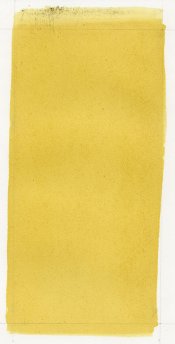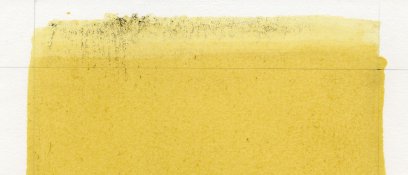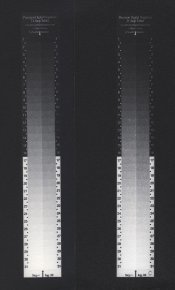Two notes: for the OP, a palladium print with iridium, and a pure iridium print. And notes re dry print out, which is somewhat different with double ferric ferrous oxalates (ammonium, sodium, lithium, etc., ferric ferrous oxalate) from obsolete print out processes that use simple double ferric oxalates (such as, ammonium ferric oxalate, lithium fo, sodium fo and so forth).
A (Mostly) Iridium Print
This print is a 4x5 contact that was made by mixing 2 drops of 10% iridium with 1 drop of 15% palladium. The sensitizer was 3 drops of ammonium ferric ferrous oxalate, of course, prepared with 7 drops of 1% C. An additional 2 drops of 26% ferric oxalate (no C) boosted the contrast nicely. Clearing was citric acid, water, t-edta, water, t-edta and a final wash. Paper was Bergger Cot 320 sized with baryta.
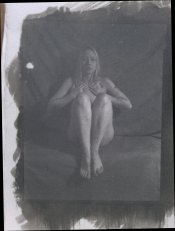
A 90% Palladium / 10% Iridium Print
The formula was 3 drops of ammonium ferric ferrous oxalate (7 drops 1% C to 10ml 40% ammonium ferric oxlate), 2 drops of 26% ferric oxalate (no C added), 3 drops 15% lithium palladium (potassium palladium would work equally well), and 1 drop 5% iridium. The image printed out fully at normal speed (~5 minutes in my 6 13w UV bulb box). It looks like a platinum print with a contrast boost more than palladium. Notice the amazing black of the model's eyes -- that is faithful to the original print.
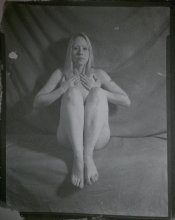
PRINT OUT
In his estimation of printing out with the noble metals, the good Loris Medici (whom I feel I practically know personally, having read so many of his genial and helpful posts in various photography forums) refers to variations on Pizzighelli's 1892 formula for printing out platinum. That venerable gentleman used ammonium ferric oxalate (AFO) and humidication (generally after exposure) to print out an image in platinum. The process was not particularly reliable, but had the advantage of allowing one to fall back on developing out a recalcitrant image that simply would not print out. Various persons picked up Pizzighelli's largely forgotten process. One attempted to control hydration of the paper before coating with AFO and platinum or palladium (and early in this century gold). Another simply based the process on palladium, which is a much more genial metal and prints out rather easily in the presence of AFO and high humidity. He substituted lithium chloride for potassium chloride, taking advantage of the highly hygroscopic nature of the lithium salt. That process was considerably more successful and is today widely used as the Ziatype.
However, almost exactly 3 years ago, I was struggling with printing chrysotypes. While so called "new" or S chrysotypes look reasonable scanned and posted on the internet at half or so original size, I did not find the face to print results I got acceptable. So, after a few weeks of cogitation about the chemical reactions that must occur in order to convert ferric iron to ferrous iron and simultaneously to reduce gold chloride to elemental gold, and with the divine intervention of a dream, I determined that the correct way to print out gold would be to convert some of the ferric iron in the ammonium ferric oxalate sensitizer to ferrous iron. My goal was to push the volume of ferrous iron to the critical mass appropriate for gold. The idea was to initiate the the reduction of gold chloride to elemental gold earlier in the exposure process. This would result in fine or invisible grain and also extend the tonal rendition of the image-forming gold, while eliminating the need for humidification of paper (with its concomitant problems -- grain, poor Dmax, unreliability, unpredictable gray scale). It worked far beyond my expectations. Printed on gelatin-sized paper, such as Arches Aquarelle, the Texas Chrysotype (which I dubbed my new ammonium ferric-ferrous oxalate formula in a rare patriotic mood) yields virtually grainless images that can render tones, from a negative, spanning 12 or more stops.
Kary with martini glass, 4x5, Chrysotype on Arches Aquarelle.

I later refined the formula further for printing out palladium, and prints that combine palladium and platinum provided the print was at least 50% palladium. To do so, I prepared lithium ferric oxalate (LFO) per Richard Sullivan's formula. To 10 ml of that LFO I added 8 drops of 2% ascorbic acid to create lithium ferric ferrous oxalate appropriate for full, dry print out with palladium and palladium-platinum. Dmax is quite strong and print out requires no consideration of humidifying one's paper, and the tonal range is as wide and rich as developed out palladium. Recommended paper is baryta-sized Bergger Cot 320, although Arches Aquarelle (with pure palladium or with palladium-gold but not with platinum), Revere Platinum and Arches Platine also work well. Very dense, contrasty negatives print out perfectly, generally with no need to tweak contrast or to boost of Dmax: they compare quite well with developed out prints. Softer negatives, such as those exposed and developed for printing on silver gelatin paper, need the contrast tweaked. Do so with any of the usual chemicals -- dichromates, sodium platinum, etc -- or with iridium at 5% to 10% strength. I generally use a few drops of straight 26% ferric oxalate (no C added) and rely on a slightly stronger first acid bath than citric acid -- a very weak solution of muriatic acid -- to get the extra iron out in such a case.
Gold Platinum Print Out (The Karytype)
Until AFFO (ammonium ferric ferrous oxalate) gold at any volume in the presence of platinum (or is it vice versa -- Loris Medici, do you know?) you could only get "interesting" atmospheric effects from that combination of metals: typically, blues, reds, violets in swirling clouds and so froth. With AFFO, you can mix the two together up to about 1/3 10% platinum and 2/3 10% gold and obtain grainless, slate colored pictorial images with a range about as wide as pure platinum and with Dmax as strong as or stronger than pure platinum. The two metals combine and form a pure pictorial image without the atmospheric effects. I have not yet tried mixing a little iridium in with the gold-platinum -- TBD what happens. The sensitizer is AFFO, 8 drops 1% C (ascorbic acid). The image prints out dry on baryta-sized Bergger cot 320 as well as Arches Platine. I have not tested it on Aquarelle, but I doubt results would be satisfactory.
Dry Print Out Platinum
Now, this is more like Loris' description of print out processes using the old 19th century ammonium ferric oxalate formula. I spent 3 months getting platinum to print out on dry paper, with no need for palladium as is the case with the Ware-Malde approach. Bottom line: I found I had to look back at Pizzighelli and his use of glycerin. Many writers assume he added glycerin to his formula to size the paper on the fly. I don't think so. I am convinced he added glycerin and dropped the potassium oxalate, in order to reduce the graininess of his print out process. I found I had to add 99% glycerin at a 1:1 ratio with platinum in order to avoid grainy platinum prints. I found ammonium ferric ferrous oxalate too soft for platinum, and that lithium ferric ferrous oxalate induces grain. So I compromised with sodium ferric ferrous oxalate prepared by adding 8 drops of 2% C to 10 ml of sodium ferric oxalate (prepared as per Richard Sullivan's formula). In order to obtain strong Dmax, I increased the number of drops of 20% platinum (either potassium platinum chloride or ammonium platinum chloride, whichever is easier to obtain) by 50%. In other words, for an 8x10 that would normally require 12 drops of 20% platinum, I recommend 18 drops. Because of the graining induced by the usual contrast boosting chemicals, I recommend either 26% ferric oxalate to boost contrast with platinum or the same technique (I am certain) used by the master printer Irving Penn -- a little iridium.
A Final Note on Dry Print Out
I have more recently begun experimenting with enhanced UV response with the double ferric ferrous oxalates. My goal is to obtain a solution sufficiently sensitive to permit enlarging negatives onto hand coated paper. I doubt I will succeed; however, I can print out a contact in about 15 seconds on a sunny hot Texas day. I have no knowledge of the equations to convert 15 second print out in bright, UV-rich Texas sunshine to the time required to print out a negative projected through a pre-1935 (uncoated) lens. I am hoping it is at least sufficient to revive the old 19th century practice of mirroring sunlight down a shaft to an indoor enlarger to print negatives on early enlarging paper. TBD.





